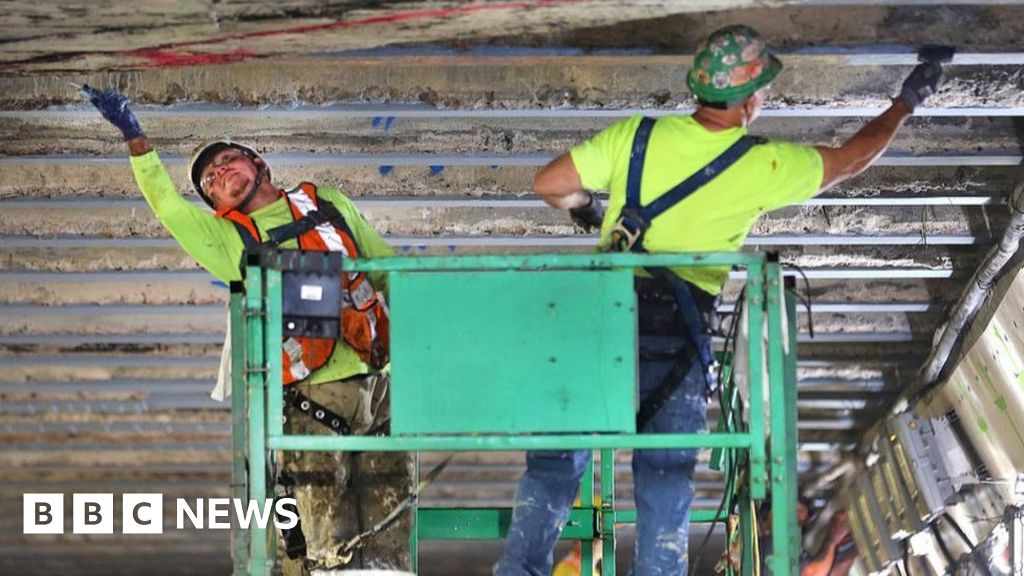
The world’s largest economy expanded at an annual rate of 2.4% in the three months to June.
US economic growth picked up this spring, despite a slowdown in consumer spending.
The world’s largest economy expanded at an annual rate of 2.4% in the three months to June, accelerating from a rate of 2% in the prior quarter.
That was far better than expected, lifted by a jump in business investment.
Consumer spending increased at an annual rate of 1.6%, slowing after a surge at the start of the year.
Analysts have been warning of looming slowdown for months as the US central bank, the Federal Reserve, raises interest rates sharply to try to stabilise prices, which soared last year.
But businesses and households have continued to spend, despite the rise in borrowing costs, confounding the expectations of forecasters.
That may help the US economy avoid a recession, but some economists also warned it may make it more difficult to root out the inflation pressures fully – potentially leading to even higher interest rates in the months ahead.
“While this growth is a positive sign of a strengthening economy, high demand will also reinforce the inflationary pressures that are an ongoing concern for the Fed,” said Richard Flynn, managing director at Charles Schwab UK.
“As long as the labour market remains tight and inflation remains above the central bank’s 2% target, we can expect to see further rate increases in the coming months.”
Inflation, the rate at which prices rise, was 3% in the US in June, down sharply after peaking at more than 9% last year.
The fall followed easing in global food and oil prices, as markets adjusted after the shock from Russia’s invasion of Ukraine last year.
Federal Reserve chairman Jerome Powell said this week that he thought the economy was likely to have to slow further before policymakers could feel confident they had stamped out the problem.
At 3.6%, the unemployment rate in the US remains unchanged from when the Fed started its rate-hiking campaign, he noted.
Wages are also rising, helping to sustain consumer spending.
Average hourly pay was 1.2% higher in June than it was a year ago, after adjusting for inflation – outpacing price increases for the first time since 2021.
“What our eyes are telling us is that policy has not been restrictive for long enough to have its full desired effects,” Mr Powell said at a press conference on Wednesday after the bank announced it was raising interest rates again, to the highest level in 22 years.
The move brought the target range for the bank’s benchmark rate to 5.25%-5.5%, up from near zero in March 2022.
On Thursday, the European Central Bank also raised interest rates by quarter of a percentage point, bringing its key rate to 3.75%, warning that inflation was “expected to remain too high for too long”.
In the US, Mr Powell was non-committal about whether the bank would push rates even higher.
Businessman Casey Stanley, president of the Indiana-based software company Boyce Systems, said he hoped borrowing costs were nearing their peak.
He said his business had seen its monthly interest payments jump more than 50% over the past two years as a result of the Fed’s moves.
“That does have real impact to our bottom line and our ability in the near term to make investments,” he said. “Even more than that, I think, it makes us more cautious.”
 0 comments
0 comments





